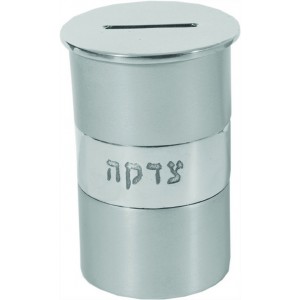Tzedakah Boxes Guide
In Judaism, helping those in need is not just a value; it is a commandment and a sacred obligation. The Hebrew word for such giving is “Tzedakah,” but contrary to common belief, it doesn’t mean charity. The word “Tzedakah” comes from the Hebrew word “tzedek,” which means righteousness or justice. So giving Tzedakah is not just a nice thing to do; it is the just thing to do, the right thing to do, the required thing to do.
The Mitzvah of Tzedakah
The Torah contains two primary passages concerning giving to those in need. In Leviticus, the Torah instructs that when reaping the harvest of the land, one should not to reap all the way to the edges of the field or pick the vineyard bare. The remainder should be left for the poor and the stranger. (Leviticus 19:9-10). In Deuteronomy, the Torah commands that “if there is a needy person among you don’t harden your heart, don’t shut your hand against your needy kin.” (Deuteronomy 15:7-8).
The centrality of Tzedakah in Jewish tradition is evident throughout all Jewish writings and teachings, but in no place more so than in the liturgy of the High Holy Days, where it is taught that Tzedakah is one of three ways (along with repentance and prayer) in which Jews can gain forgiveness from their sins. Giving Tzedakah is an obligation required of everyone, even the poor who receive Tzedakah themselves. According to the Talmud, the person who gives even the smallest coin is privileged to feel G-d’s presence.
There are many ways of giving Tzedakah, but the highest form of Tzedakah is one that helps the receiver to become self-sufficient. It is also considered very important to give in such a way that does not cause shame or humiliation to the receiver. For this reason many people choose to give Tzedakah anonymously.
The Tzedakah Box (or “Pushke”)
One tradition that developed out of this paradigm of giving anonymously is the Tzedakah Box (often called by its Yiddush name, the “pushke”). The Tzedakah Box is a small box that is kept in a central place in the home (often the kitchen) or the synagogue that encourages everyone to participate in the mitzvah of giving Tzedakah--and doing so anonymously. Many families encourage the tradition of putting some coins in the pushke when celebrating an achievement or when something good happens (for example, getting an A on an exam, winning a baseball game, celebrating a birthday, etc.) It is a time-honored tradition to put some coins in the Tzedakah Box each week just before Shabbat, and many families give children coins especially for this purpose to teach them the importance of giving Tzedakah. A family pushke is also a wonderful learning opportunity because each member of the family can help to decide where to donate the money.
Perhaps the most famous pushke is the “little blue box” of the Jewish National Fund (or “Keren Kayemet L’Yisrael.”) Even before the founding of the State of Israel, these little blue aluminum boxes became widespread, and the proceeds did (and still do) help to build the State of Israel.
Tzedakah Boxes as Judaica
Tzedakah Boxes have come a long way since the “little blue box,” and they can be lovely (and functional) works of art to keep in the home or synagogue. They come in all shapes and sizes, can be made of almost any material (quite often wood, plastic, or metal), and are often decorated with images of Jerusalem, Israel, or other Jewish symbols and the Hebrew word “Tzedakah.”
For More Information
For more information on Tzedakah Boxes, Judaica, or synagogue items, feel free to contact our Judaica experts with any questions or concerns.


